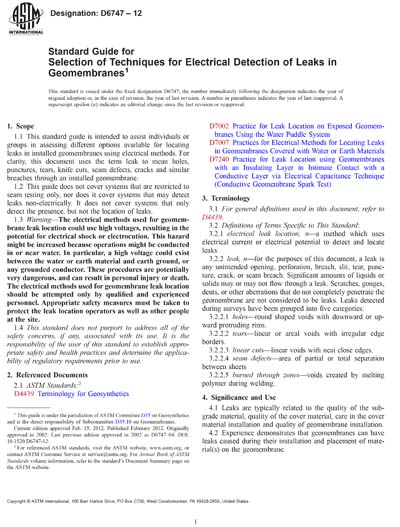Historical
ASTM D6747-12
Standard Guide for Selection of Techniques for Electrical Detection of Leaks in Geomembranes
1.1 This standard guide is intended to assist individuals or groups in assessing different options available for locating leaks in installed geomembranes using electrical methods. For clarity, this document uses the term leak to mean holes, punctures, tears, knife cuts, seam defects, cracks and similar breaches through an installed geomembrane.
1.2 This guide does not cover systems that are restricted to seam testing only, nor does it cover systems that may detect leaks non-electrically. It does not cover systems that only detect the presence, but not the location of leaks.
1.3 Warning—The electrical methods used for geomembrane leak location could use high voltages, resulting in the potential for electrical shock or electrocution. This hazard might be increased because operations might be conducted in or near water. In particular, a high voltage could exist between the water or earth material and earth ground, or any grounded conductor. These procedures are potentially very dangerous, and can result in personal injury or death. The electrical methods used for geomembrane leak location should be attempted only by qualified and experienced personnel. Appropriate safety measures must be taken to protect the leak location operators as well as other people at the site.
1.4 This standard does not purport to address all of the safety concerns, if any, associated with its use. It is the responsibility of the user of this standard to establish appropriate safety and health practices and determine the applicability of regulatory requirements prior to use.
ASTM International [astm]

